'Project Power' directors reveal they have a 'massive list' of extra super-powers (exclusive)

Project Power directors Ariel Schulman and Henry Joost have a “massive list” of extra super-powers that didn’t make it into the movie — but they’re not banking on a sequel just yet.
The new Netflix thriller centres on a dangerous drug that gives the user a super-power for five minutes, including everything from chameleonic camouflage to bladed arms.
Jamie Foxx’s mysterious loner Art is on the hunt for the supplier of the illicit substance, which brings him into the orbit of small-time dealer Robin (Dominique Fishback).
Read more: Foxx on the importance of black superheroes
It’s an action-packed tale — penned by The Batman co-writer Mattson Tomlin — in which Schulman and Joost showcase some high-octane superhero sequences, but there could have been many more.
“There’s a version of this movie that has, like, twice as many powers,” Schulman told Yahoo Movies UK.
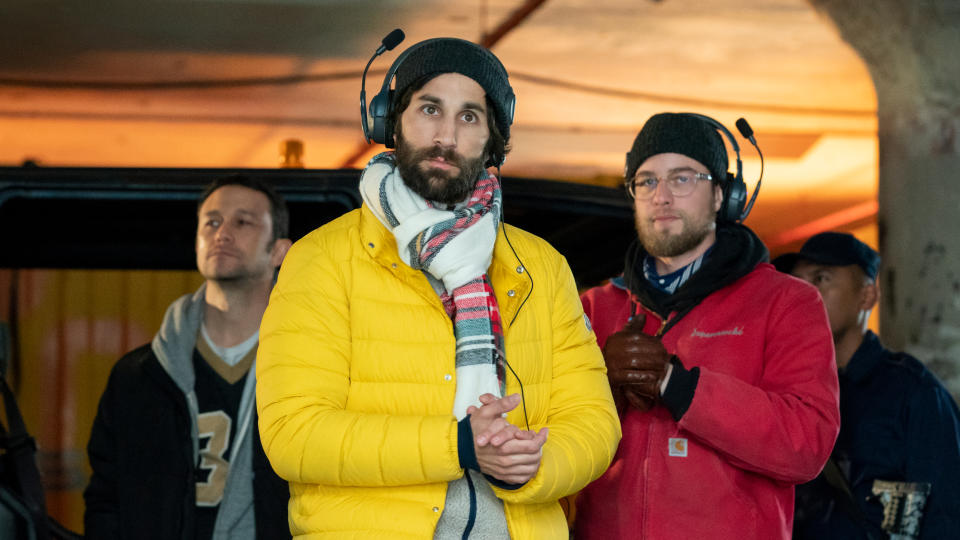
The movie’s conceit is that the drug utilises adaptations from the animal kingdom — including, notably, the unique predation techniques of the pistol shrimp — in order to give humans extraordinary powers.
Joost said: “We have a massive list of powers, and their corresponding animals.”
Read more: Everything coming to Netflix in August
Schulman added: “We pared it back because, every time you pull a power out or shorten an action scene, it allows more room for the dramatic scenes.
“And that’s the heart of the movie for us — the relationship between Robin and Art.”
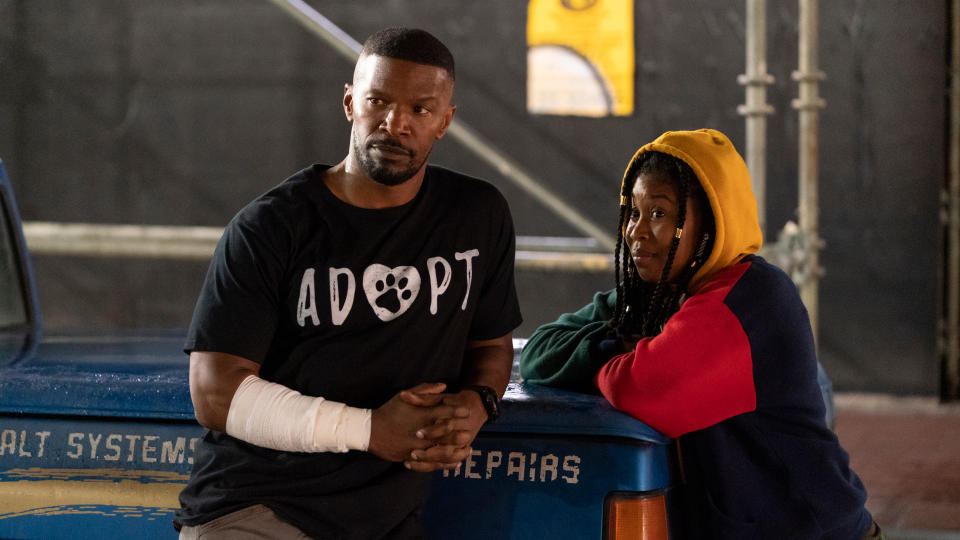
With so much material waiting in the wings, a follow-up would certainly have plenty to work with, but Schulman isn’t counting his chickens just yet.
“If you start a Reddit chat thread, maybe you can get the demand going,” he said.
“But I don’t think we would ever presume that something should have a sequel until the fans ask for it.”
Read more: Netflix turning The Old Guard into franchise
Schulman and Joost rose to prominence with the documentary Catfish and went on to helm two entries in the Paranormal Activity franchise for Blumhouse, including the well-reviewed Paranormal Activity 3 in 2011.
They were approached for Project Power after producers saw their 2016 techno-thriller Nerve, which featured Dave Franco and Emma Roberts taking part in a social media game gone wrong.
Read the full interview with Ariel Schulman and Henry Joost, in which they discuss the relationship between comedy and horror, making the step up to big-budget filmmaking and the reason why the movie was made in New Orleans...
Yahoo Movies UK: I wanted to start by asking about the script for this, which was quite an in-demand spec screenplay with lots of people circling it. How did it get to your door?
Ariel Schulman: The producers, Bryan [Unkeless] and Eric [Newman], had seen Nerve and really dug it. They thought we might be able to do something fresh with this one, so they called us out of the blue.
Did you know as soon as you got the chance to read it that it was something special?
Henry Joost: Yeah, I think we knew right away. I remember I called Rel after reading about 10 pages and I said “I think this should be our next movie, if we can get the job”.
In terms of your previous work, this was quite a big step up budget-wise. Was that daunting at all for you?
AS: Yeah, it’s a big responsibility when someone says “we think you can do this”. Our last movie cost X amount of dollars to make and they said it looked like it cost X plus Y amount of dollars, so we said “that’s very nice”. They said they believed in us to make a big action/sci-fi movie and that kind of encouragement goes a long way.
The script felt so clear to us and I think we both had a very clear vision of what it could look and feel like. You don’t get too distracted with what it costs or how big it is. You just try to make it the thing it’s supposed to be.
HJ: You just stick to the plan. We had amazing support on this film too, with our producers, and all of our heads of department were really great and experienced people. In particular, our stunt coordinator Kevin Scott. It was our first time working with him. He came in and was very supportive and protective of us. He said: “I can see you guys have really good ideas. I know that you’re used to driving a Mazda Miata, but you’re driving a semi truck on the highway now. It can still go fast, but it’s not as manoeuvrable as you’re used to.”
That turned out to be the best metaphor, I think, for the experience. At this level, the crew is bigger, the size of the movie bigger, the actors are bigger, everything is bigger. It takes a bit of getting used to, but I think that once you know how to drive it, it’s just as powerful.
It’s interesting what you said about making movies look more expensive because I confess that when I wrote that question, I had to check how much Nerve cost because it looks more expensive than it is. I really loved it and I wish more people had seen it.

AS: Thanks! It’s still got legs, I think. We started making movies really, really cheaply and independently while basically working in every department of the crew. Catfish, we spent $2,000 on or something like that to shoot the movie. Those kind of skills were very helpful and the Paranormal Activity films were very helpful and Nerve too. We always feel like there’s a way to get it done and the more obstacles and challenges ahead of you sometimes just makes you more creative.
It also seems like no matter how big a budget is, it’s still never quote-unquote enough and you are forced to be endlessly resourceful. But that’s part of the fun for us.
Read more: Project Power screenwriter updates on The Batman
Definitely, and I think a lot of that fun comes across with the super-powers that the characters have. When you got the project, were all of the powers written into the script, or were you able to bring in your own?
HJ: There were a few powers that we brought in later. I would say it was maybe 50-50. Do you think that’s right, Rel?
AS: Yeah, fire power was there, ice power, a handful of them.
HJ: Maybe 60-40. Some of the later powers, like the character we call Knifebones and the stretchy guy, came later.
Some of them are fantastic. Knifebones, I think, was one of my favourite moments in the whole film.
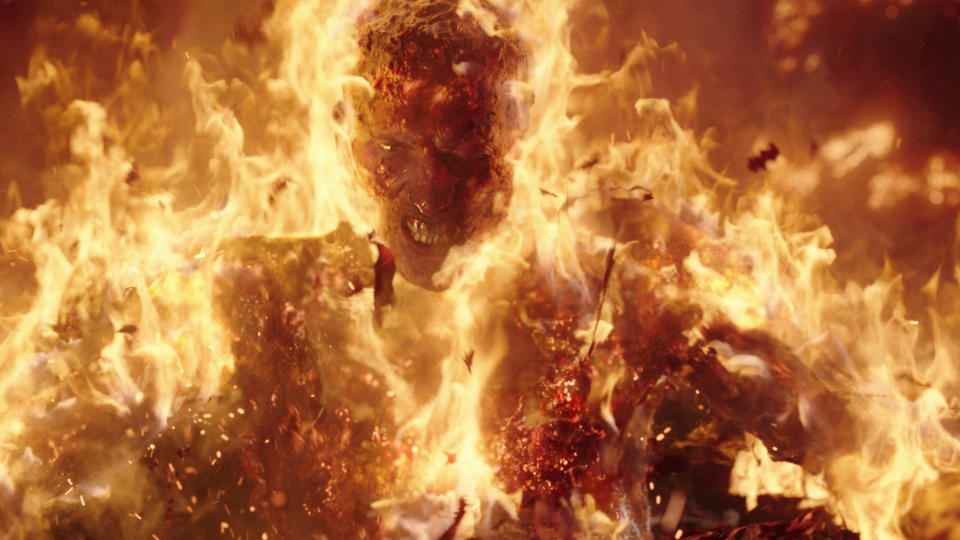
AS: Sometimes necessity breeds invention!
Were there any cool ideas for powers that you had and then either couldn’t film or couldn’t fit into the final cut?
HJ: We have a massive list of powers, and their corresponding animals.
AS: There’s a version of this movie that has, like, twice as many powers. But we pared it back because, every time you pull a power out or shorten an action scene, it allows more room for the dramatic scenes. And that’s the heart of the movie for us — the relationship between Robin and Art. To be able to have a 10 or 12 minute sequence in the veterinarian’s office for them to become friends, I don’t think you often find that in an action movie. It was important to us to make room for that.
One of the real dramatic elements of the film is its New Orleans setting. There are very pointed lines of dialogue referencing very real events. How important was that side of the story to you guys?
HJ: It was very important. The movie wasn’t originally written for New Orleans. It was written for Portland, Oregon. We explored several cities to shoot in and New Orleans just felt like the place where this could happen. It wasn’t that it couldn’t happen in New York or LA, but it would just be a bigger thing somehow and more of an internationally known thing.
Having spent a lot of time in New Orleans, particularly after Hurricane Katrina working on a documentary and having seen the government response to that, we felt like this was definitely a place where a drug like this could be overlooked and could fly under the radar.
It’s fascinating to hear that because, when you watch the film, you can’t imagine it being anywhere but New Orleans.
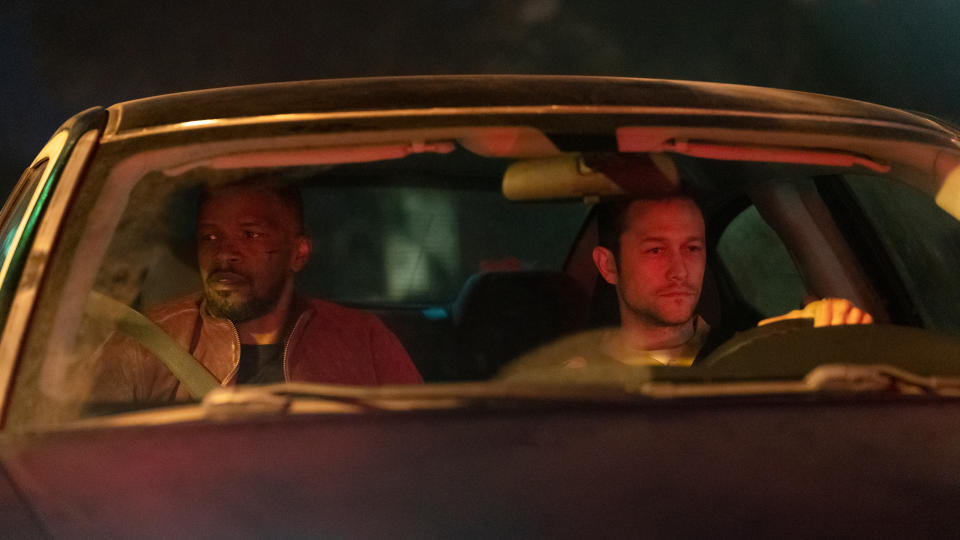
HJ: We spent a lot of time working with Mattson and we scouted locations with the writer, which I think is unusual. Part of our process is adapting the film to fit the location and to suit the actors. For the location part, we had Mattson there with us, and we would see something and get really excited, like the abandoned amusement park or the incredible graffiti installation where Art meets Newt.
So we’d decide we wanted to shoot somewhere, then we could work with Mattson to change the script to fit that location and fit the nuances and eccentricities of the city.
The cast is an interesting mix of very established names and newer stars we’re being introduced to. Could you talk about finding the cast and striking that balance between bringing new talent to the fore and using established names?
AS: Great, I’m glad that comes across.
HJ: I think we wanted the Robin character to be someone you might be familiar with, but felt more like you were being introduced to on a big scale. We knew Dominique was good enough to potentially steal the show, and I think she does. Joe [Gordon-Levitt] and Jamie [Foxx] were gracious enough to recognise her talent and let her do that, which turned out really well.
Read more: Joseph Gordon-Levitt discusses acting return
So that was important because that’s the core of the movie. Outside of that, we wanted it to feel like New Orleans, which is this gumbo of diversity and range of opinions.
I think it’s a fascinating world to be in. You mentioned the importance of the stunt team earlier. How difficult was it to get the big, super-powered sequences right and make them really fly?
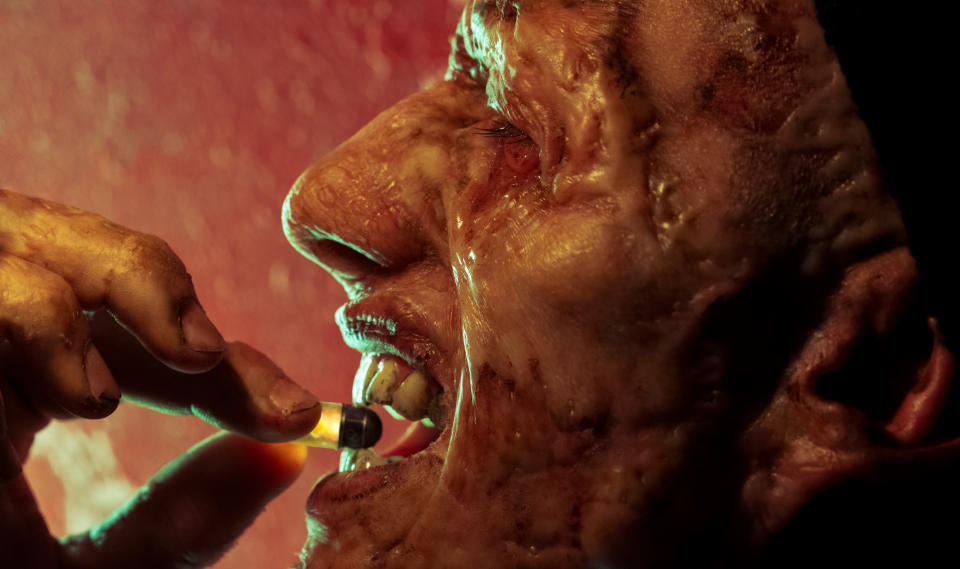
HJ: It took a lot of work and a lot of collaboration between many departments. We had a fantastic stunt team led by Kevin Scott and the fight choreographer Cory DeMeyers, who also happens to play the Camouflage Man. He sort of moonlighted as one of the performers in the movie.
Read more: Star Wars stunt coordinator reveals on-set secrets
They were there with us full-time in New Orleans, working out the fight sequences and choreographing. We would come in on afternoons and weekends and see what they were up to, tweak it and work out with them. At the same time, we were developing how we were going to shoot the movie with Ivan Moran, our VFX supervisor, who is brilliant, and our long-time friend and DP Mike Simmonds.
It was really a team effort. So much work goes into that and so much planning. There’s no way to really wing it.
You guys have been working together on films for a very long time. Did it present any extra challenges to have two directors working on a movie this big or did it make it easier to have someone to bounce things off?
AS: Henry is just infinitely smarter and more capable, so it’s very useful for me. He makes me seem a lot better. There was a point when we were shooting maybe 15 or 16 nights in a row, in the rain, and I got really sick and I could barely speak. But I could sit and watch the monitor and talk on a headset to Henry and tell him what the camera was picking up while he was standing in front of the camera and working with the actors that day.
HJ: It’s kind of a superhuman job sometimes. I don’t know how one person does it.
AS: Oh my God, much respect to any solo directors.
HJ: It’s hard for two people!
I have to ask the obvious question. This is such a rich world and you’ve got your big list of powers. Is there a chance of a sequel and, if there is, would you be willing to come back?
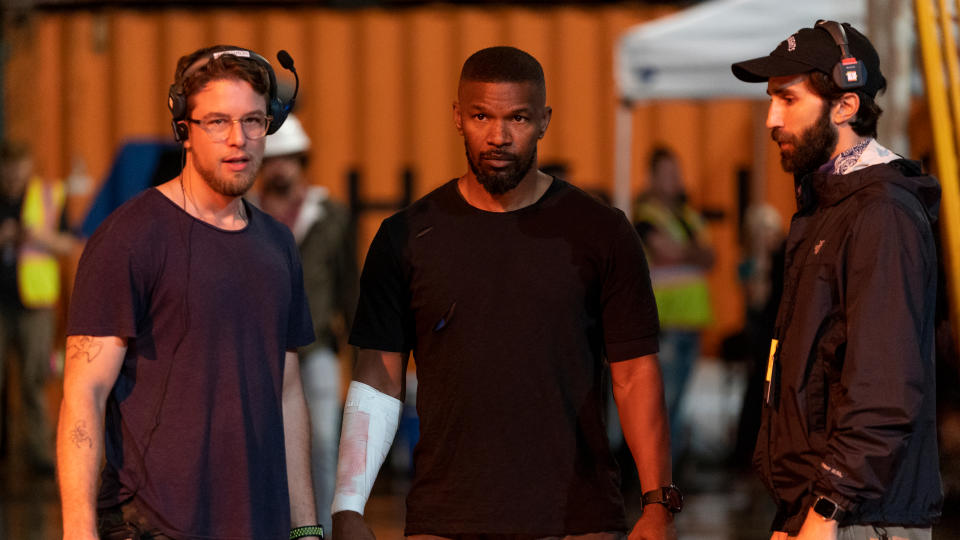
AS: Well if you start a Reddit chat thread, maybe you can get the demand going. But I don’t think we would ever presume that something should have a sequel until the fans ask for it.
I guess that’s one of the joys of Netflix, that it’s immediately available to this really huge audience?
AS: Yeah, isn’t it cool?
HJ: It’s unprecedented. How many people will have the opportunity to watch this movie straight away?
AS: And if we’d made it with a studio, I’m not sure when it would be able to come out.
I wanted to ask you briefly about your experiences making Paranormal Activity films. It’s a completely different end of the spectrum in terms of scale. What did you learn from making those films that you’ve been able to transfer into these bigger-budget projects?
AS: The most important thing was that we learned how to work within a studio system, with a bigger and more experienced crew than what we had previously been working with, which was basically ourselves and some of our college friends. I think it proved to be a really excellent training ground. We consider that our film grad school.

And if they phoned you up tomorrow and asked you to make another one?
HJ: I would say that I’d like to read the script.
It’s interesting to me that superhero movies and super-powered stories tend to attract directors who’ve worked in horror. Do you think there’s a reason for that linkage?
AS: I think horror is an awesome training ground for any filmmaker. It gives you a really direct sense of cause and effect and what kind of effect a scene can create on an audience. Seeing Paranormal in the theatres and seeing people audibly react and wanting them to be as loud as possible really turned us on to the idea that a quiet audience may not be our favourite kind of audience. I think in horror you can really measure the effectiveness of the scene.
Read more: Paranormal Activity 7 set to reinvigorate franchise
HJ: There’s kind of a genre-balancing in horror also, or at least in some horror. You’re bouncing between the story, the characters and also the tension that I think, in a good horror movie, exists throughout. We really tried to introduce humour into our Paranormal Activity films, which is something we can’t really help doing and tried to do in [Project Power] too. There’s a very close relationship between being tense and nervous and laughing. The difference between gasping and screaming and laughing is not that big.

You mentioned there that a quiet audience is not really your thing and, with that in mind, is it a shame that Project Power won’t be seen on a big screen?
HJ: I wish it was, and I think it would’ve been if not for COVID. There was going to be a small theatrical release. I wish I had a window into everyone’s living room watching it. An extremely creepy window, like a magic window that I could look through any time I wanted. I would just like to see people’s reactions. That’s one of the best parts of being a filmmaker. So I guess we’ll have to rely on Twitter and Reddit and text messages.
AS: Oh, they’ll let you know!
HJ: But I think the value for us of having this movie come out now and hopefully entertaining people at such a difficult time far outweighs the necessity to have it in a movie theatre. I would much rather it came out now than in six months when it might be able to have a little theatrical window.
Project Power is streaming on Netflix as of today.

 Yahoo Movies
Yahoo Movies 
